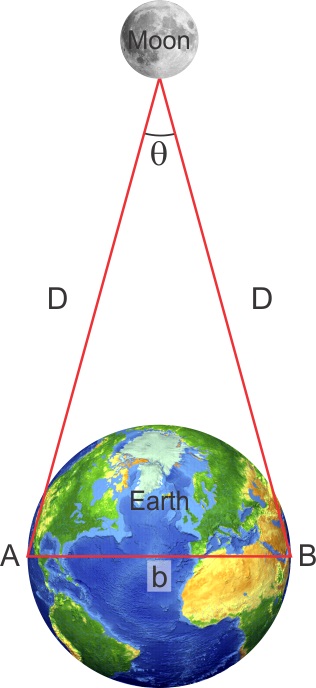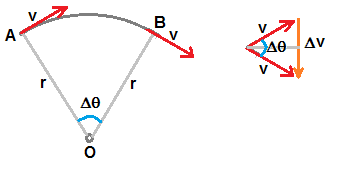Ask questions which are clear, concise and easy to understand.
Ask QuestionPosted by सत्य सनातन? 5 years, 2 months ago
- 2 answers
Yogita Ingle 5 years, 2 months ago
Van der Waals equation is an equation relating the relationship between the pressure, volume, temperature, and amount of real gases. For a real gas containing ‘n’ moles, the equation is written as;
{tex}\left( P+\frac{a{{n}^{2}}}{{{V}^{2}}} \right)\left( V-nb \right)=n\,R\,T\,(P+V2an2)(V−nb)=nRT{/tex}
Where, P, V, T, n are the pressure, volume, temperature and moles of the gas. ‘a’ and ‘b’ constants specific to each gas.
The equation can further be written as;
- Cube power of volume: {tex}{{V}^{3}}-\left( b+\frac{RT}{P} \right){{V}^{2}}+\frac{a}{P}V-\frac{ab}{P}=0V3−(b+PRT)V2+PaV−Pab=0{/tex}
- Reduced equation (Law of corresponding states) in terms of critical constants:
{tex}\left( \pi +\frac{3}{{{\varphi }^{2}}} \right)\left( 3\varphi -1 \right)=8\tau :\,\,where\,\,\pi =\frac{P}{Pc},\varphi =\frac{V}{Vc}\,\,\,and\,\,\tau =\frac{T}{Tc}(π+φ23)(3φ−1)=8τ:whereπ=PcP,φ=VcVandτ=TcT{/tex}
Posted by Harsha C.D 5 years, 2 months ago
- 0 answers
Posted by Harsha C.D 5 years, 2 months ago
- 3 answers
Yogita Ingle 5 years, 2 months ago
When the satellite is revolving around the earth, it is because of the gravitational force towards the earth that acts as a centripetal force. Since the initial speed is less than the escape speed, earth’s gravity pulls the satellite towards the centre of the earth. So the satellite is always accelerating around the earth.
Posted by Royal Thakur ? 5 years, 2 months ago
- 3 answers
Posted by Kunal Jadhav 5 years, 2 months ago
- 1 answers
Posted by Kunal Baraskar 5 years, 2 months ago
- 1 answers
Posted by Aadya Singh 5 years, 2 months ago
- 3 answers
?? 5 years, 2 months ago
Posted by Sanidhya Manhas 5 years, 2 months ago
- 0 answers
Posted by Shubham Ojha 5 years, 2 months ago
- 0 answers
Posted by Harsha C.D 5 years, 2 months ago
- 1 answers
Ruhi Rao 5 years, 2 months ago
Posted by Harsha C.D 5 years, 2 months ago
- 1 answers
Ruhi Rao 5 years, 2 months ago
Posted by Royal Thakur ? 5 years, 2 months ago
- 4 answers
Ruhi Rao 5 years, 2 months ago
Posted by Ahamed Anas 5 years, 2 months ago
- 1 answers
Gaurav Seth 5 years, 2 months ago

Given that the parallax angle, θ = 1° 54' = 114'
114' = 114× 60'' = 6840''
We know that 1'' = 4.85 × 10-6 rad
Therefore 1° 54' = 6840'' × (4.85 × 10-6 ) rad
θ = 3.32×10-2 rad
Given the diameter of earth, b = 1.276 × 107 m

Hence the distance of the moon from the earth = 3.843 × 108 m
Posted by Dεερακ Ȿιηɠꜧ 5 years, 2 months ago
- 1 answers
Posted by Aman Sahni 5 years, 2 months ago
- 1 answers
Posted by Anas Shaikh 5 years, 2 months ago
- 2 answers
Yogita Ingle 5 years, 2 months ago
Linear Expansion means expansion in length due to increase in temperature. Linear expansion means fractional change in length i.e. how the length is changing with respect to original length.
As we can seefrom above images the length has been increased from
l to l+Δl.
Coefficient of Linear Expansion is a parameter which tells us how the size of the object changes with change in temperature. It is defined as degree of linear expansion divided by the change in temperature.
- If the solid is in the form of long rod, then for small change in temperature, ΔT, the fractional change in length, Δl/l, is directly proportional to ΔT.
Mathematically can be written as:-

Where αl= the coefficient of linear expansion
It is denoted by αl
- It is characteristic of the material of the rod.It varies for different substance.
Posted by Mithun G Kumar 5 years, 2 months ago
- 1 answers
Gaurav Seth 5 years, 2 months ago

Let us consider a particle travel with constant speed from A to B in a circular path of radius r in a short time Δt
making an angular displacement Δθ as shown in figure.
distance S travelled is the arc length AB and it is given by, S = v×Δt ..................(1)
Arc distance S also written geometrically as, S = r×Δθ ...........................(2)
from (1) and (2), we write , Δθ/Δt = v/r ...............(3)
Eqn.(3) is rate of angular displacement or angular velocity.
For small angular displacement made in short time Δt, we can write = dθ/dt = v/r ......................(4)
In right side figure, velocity vectors at A and B are drawn by merging their initial points.
The angle between these vectors also Δθ.
from the right side figure, we write, sin (Δθ/2) = (Δv/2) / v or Δv/2 = v sin(Δθ/2) .................(5)
For small angle Δθ, eqn.(5) is written as, Δv/2 = v Δθ/2 or Δv/Δθ = v or dv/dθ = v .....................(6)
using eqn.(4) and eqn(6), acceleration directed towards centre, dv/dt = ( dv/dθ ) (dθ/dt) = v×(v/r) = ( v2 / r )
If m is mass, then force F = mass×acceleration = m×(v2 / r )
Posted by Bhumi Shukla 5 years, 2 months ago
- 1 answers
Posted by Sameer Yadav 5 years, 2 months ago
- 1 answers
Ruhi Rao 5 years, 2 months ago
Posted by Bhumi Shukla 5 years, 2 months ago
- 2 answers
Posted by Aadya Singh 5 years, 2 months ago
- 4 answers
Yogita Ingle 5 years, 2 months ago
Normally each physical quantity requires a unit or standard for its specification, so it appears that there must be as many units as there are physical quantities. However, it is not so. It has been found that if in mechanics we choose arbitrarily units of any three physical quantities we can express the units of all other physical quantities in mechanics in terms of these. So, length, mass and time are chosen as base quantities in mechanics because
(i) Length, mass and time cannot be derived from one another, that is these quantities are independent.
(ii) All other quantities in mechanics can be expressed in terms of length, mass and time.
Sulinder Kumar 5 years, 2 months ago
Posted by Aadya Singh 5 years, 2 months ago
- 4 answers
Posted by Dεερακ Ȿιηɠꜧ 5 years, 2 months ago
- 1 answers
Posted by Royal Thakur ? 5 years, 2 months ago
- 4 answers
Posted by Payal Rana 5 years, 2 months ago
- 2 answers
Chandan . 5 years, 2 months ago
Gaurav Seth 5 years, 2 months ago
Gravity is a force that attracts a body towards the centre of the earth, or towards any other physical body having mass.
History of Gravity
- In 1687, Sir Isaac Newton first discovered gravity. While sitting under an apple tree, he noticed an apple falling down. Then he tried to figure out why the apple instead of going up or left or right, came down. In this situation, there was clearly an unknown force at play, that force is what Newton called gravity and his theory is called Newton’s law of Universal Gravitation.
- Later in the early 20th century, Albert Einstein developed a whole new idea about gravity. According to him, gravity is the warping of space and time.
Posted by Saloni Chaudhary 5 years, 2 months ago
- 0 answers
Posted by Dipabali Kar 4 years, 6 months ago
- 1 answers
Sia ? 4 years, 6 months ago
Posted by Shashwat Singh 5 years, 2 months ago
- 4 answers
Shashwat Singh 5 years, 2 months ago

myCBSEguide
Trusted by 1 Crore+ Students

Test Generator
Create papers online. It's FREE.

CUET Mock Tests
75,000+ questions to practice only on myCBSEguide app
 myCBSEguide
myCBSEguide
सत्य सनातन? 5 years, 2 months ago
1Thank You